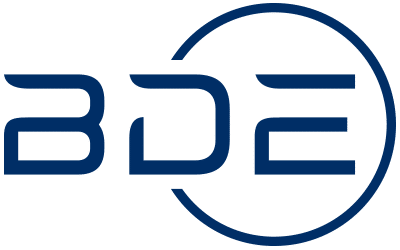Search Engine Optimisation is about optimising your website to make it rank higher in the search engine results pages. Websites can be designed in such a way as to achieve this, resulting in huge benefits for your website and business. The importance of being SEO friendly really goes without saying – think about how often you use search engines to find what you are looking for on the web and how often do you look past the first page or two?
Depending on your business type, and how you usually generate new sales and target new customers, being higher in search engine results pages could be the make-or-break for your business. There is no point spending a lot of time and money in creating your website, if no one is going to find it.
SEO is a continuous process; however the design of your website is the first vital step in the strategy. It needs to be both visually appealing and SEO friendly at the same time – this is often easier said than done. A lot of websites put all their efforts into one or the other, but not both.
Some basic aspects of creating an SEO friendly website are placement of key phrases, well written HTML code, use of social media, and interesting content which will encourage users to link to it.
However, a good place to start is to focus on your business objectives; think carefully about who you are targeting. Use market research to find out what your target audience are searching for, this will help identify your keywords and phrases. Another good indicator of what these should be is to check out what your competitors key phrases are – if they are ranking higher than you in search engine results, they must be doing something right.
We have compiled a list of some of the most important aspects that are needed for an SEO friendly website.
Avoid using Flash
Search engines cannot read Flash files, so when they are crawling your website looking for content it will be invisible to them – it will be completely missed. If you have built your entire website using Flash, then you are committing what is commonly referred to as ‘SEO suicide’ – your website may not appear in the search engine results at all. Another good reason not to use Flash is that many smart phones struggle to support flash – Apples’ iPhone and iPad do not support it at all.
Avoid using frames
A professional web designer would rather cut of their right arm than use frames to build a website. Again, search engines struggle to read a website that uses frames – Search Engine Spiders can’t index content inside a frame. It only comes up with a message saying ‘Sorry! You need a frames-browser to view this site’. So unless someone has searched for those exact words, your website is unlikely to appear in any search results.
Research your Key Phrases
As previously mentioned, you can use market research to find out what your target audience are searching for. But there are some keyword and key phrases research tools that can do the work for you. For example, Wordtracker is a huge database of keywords/key phrases from which you can discover what your target market is entering into search engines. It is a popular and effective tool used by many professionals. However, it isn’t free, but could be worth every penny. Some features include a search for common misspellings of your targeted keywords, therefore allowing you to include these in your key phrases and attract some of your audience who you may have previously missed. You can also do a competition search and find out the keywords which are being used by the least number of competing websites – the less websites using your key phrases, the higher you will rank in the search engine results.
Alternatively there are many free alternatives. Although perhaps less efficient, it is better than nothing if researching the most effective key phrases is important to you.
Use your key words and phrases wisely
– The most important place to put your primary key phrase is in the title tag – this is the primary text that is visible in the search engine results pages. Don’t make it too long (between 6-8 words) and place your key phrase as close to the beginning of the tag as you can. Don’t stuff the title tag with your keywords – the search engine may interpret it as spam.
– Put your keywords in the filenames and page names, as these are looked at by search engines. Make sure to separate words with hyphens, otherwise they may not be read as separate words.
– Search engines will also give more weight to key phrases found in headings, but only if your website uses the usual HTML ‘header tags’ (H1, H2, H3 etc.). So always make sure a good heading is given to each individual page that shows visitors and search engines the relevance of the page.
– Key phrase placement is also important in the body text of the site – if a key phrase is found nearer the top of the page it will count more than if it is lower down.
– Clearly label and use suitable image file names, as often images you use will be highly related to your key phrases.
– Although not as important as it once was, put keywords and phrases into the Meta description tag and the Meta keywords tag. The meta description should describe the content of the page in one or two lines of readable English. Make sure the description encapsulates the page and would both inform and interest a reader – as some search engines sometimes use the description tag as a ‘snippet’ from your site and include it in the search results. Make sure you have unique descriptions for each page.
– The meta keywords tag is where you can list your keywords and phrases separated by commas. Again, don’t make it too long – make sure your keywords match the content of your page. Also be sure to make they are listed by importance, most important being at the start.
Friendly URLs
Include keywords and phrases in your URL as this helps search engines identify what the page is about. Visitors are also often intimidated by long and cryptic URL’s – think about how annoying it is when you want to copy and paste a link and its hugely long and complicated, it also makes it impossible to remember. Consider that the URL is also displayed in the search results, a readable URL will look more appealing and legitimate.
Navigation
Navigation is important as it helps visitors find what they wants and will show the search engine what the webmaster thinks is most important. Make sure the main navigation is well constructed so that it links to the most important pages. Users should also be able to get back to the main page easily if they are on another page which is deep within the site. Again, this will make your site more user friendly as well as being easier for search engines to crawl.
Sitemaps – HTML and XML
Include a sitemap on your website for both users and search engines. This will ensure that both can easily access the whole of your site, especially pages which don’t have many links pointing towards them so are harder to find.
Content
A website has very little time to sell until the reader moves on. Therefore your content needs to be compelling and interesting. Good content will encourage users to direct others to it via social media, blog posts, email, forums etc. Word of mouth is one of the most important factors in building your reputation both with users and search engines.
Make your content well written and easy to follow, proof read to check there are no spelling or grammatical mistakes.
Organize your content and pages into easily definable sections, certain pages can be used to target certain key phrases. Keeping each page specific to its topic also helps search engines – if one page covers too many areas, search engines will be confused as to what the page is really about. Again, it is also more user friendly as it will be more logical and the users will be able to find what they want faster.
Link Building
Link building is the process of getting a link to your website placed on another relevant and credible website who have an overlapping customer base with you; it is the online equivalent of word-of-mouth. It is important to make connections to other websites who deal in a similar or complimentary product or service – if they then recommend your site to their readers, they are saying that your website and business are at the same quality level, and are legitimate, trustworthy and worth checking out.
Link building improves your SEO because a site that is linked to by other reputable sites will be seen by search engines as a good place to direct visitors and will improve your ranking. Link building also increases traffic to your site, therefore increasing brand recognition and improved reputation, which could lead to increased revenue.
Examples of link building methods are: sending press releases to publications, posting on forums, offer to link to other people’s sites if they link to yours, blog posts, and social media.
Social Networking
Social networking is now synonymous with the internet; most web users now have an account with one social networking website or another, be it Facebook, Twitter or LinkedIn etc. It would be foolish not to tap into this free and powerful communication tool. Social networking is also an important part of SEO because, just like search engines, it will prioritise the latest and most relevant information. Having an active presence on social networks will help to connect to and engage with current and potential customers. Use the platform to advertise new products, services and special offers, and soon you may find your readers adding your website link to their social pages, blogs, bookmarks, forums etc, thus increasing your rank in search engines.
Make sure social network icons are clear on your site to link users to your social pages. Also, if you are a daily user of Twitter, add a twitter feed to your website.
Over and above all, it should be noted that SEO is continuous work; if you put in the effort, then you can expect to see your site rank higher in search engine results pages. Be positive, but don’t be put out if it doesn’t happen overnight. Following the points above will definitely help start a successful SEO campaign for your business.


